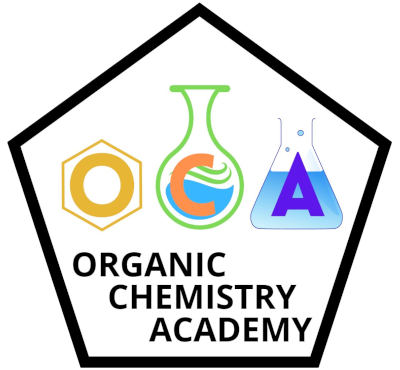Polymer chemistry – the science of building and understanding large molecules made of repeating units – can seem intimidating at first. It’s a massive field encompassing everything from plastics and rubbers to adhesives and biomedical materials. However, a solid foundation in organic chemistry provides an incredibly valuable framework for understanding and approaching polymer concepts. This section will bridge the gap, showing you how core organic chemistry principles directly apply to the behavior and synthesis of polymers. We’ll explore how reactions like addition polymerization, condensation polymerization, and functional group transformations are fundamentally linked to the creation and modification of these large molecules. Essentially, many of the tools and techniques you’ve honed in organic chemistry are directly transferable and incredibly relevant to the world of polymers.
The Building Blocks: Monomers
Think about your favorite plastic bottle, a comfy fleece blanket, or even the paint on your wall. All of these are polymers, gigantic molecules made of repeating units, and they rely on principles you already understand from organic chemistry.
A polymer is a large molecule (macromolecule) composed of many repeating subunits (monomers) linked by covalent bonds. Unlike small organic molecules like ethanol or benzene, polymers are vastly different in size and complexity. Understanding polymer chemistry is vital because it has applications in a huge range of fields, including materials science, medicine (think biocompatible polymers for implants), electronics (conducting polymers), and even cosmetics.
In this post, we’ll delve into the fundamentals of polymer chemistry, starting with monomers, then explore polymerization reactions, the diverse types of polymers, and consistently connect these concepts back to core principles within organic chemistry.
Polymerization Reactions: Forming the Chain
What are Monomers?
Monomers are the fundamental, small organic molecules that link together to form larger molecules known as polymers. Think of them as the “parent” molecules – individual building blocks – that, when repeatedly joined, create a massive chain. Polymers are characterized by their high molecular weight and repeating structural units.
Examples of Common Monomers:
- Ethylene (Ethene): (Diagram: A six-carbon ring with a double bond – C₂H₄) – Ethylene is a key monomer, leading to the production of polyethylene, the most widely used plastic, often found in plastic bags. The double bond (alkene) is crucial for the polymerization process.
- Vinyl Chloride: (Diagram: A six-carbon ring with a chlorine atom attached – C₂H₃Cl) – Polymerization of vinyl chloride yields polyvinyl chloride (PVC), a versatile plastic used in pipes, flooring, and siding.
- Styrene: (Diagram: A five-carbon ring with a methyl group attached – C₆H₆) – Styrene is polymerized to form polystyrene, a rigid plastic used in disposable cups and packaging.
- Amino Acids: (Diagram: A simplified amino acid structure: NH₂-CH(R)-COOH) – Amino acids are the building blocks of proteins, which are complex polymers. The formation of proteins involves peptide bonds – covalent links – formed between the carboxyl group (-COOH) of one amino acid and the amino group (-NH₂) of another.
- Simple Sugars: (Diagram: Glucose – a six-carbon ring with multiple hydroxyl groups – C₆H₁₂O₆) – Glucose and fructose are examples of naturally occurring polymers. These sugars exhibit repeating units and form the basis of cellulose and starch, prevalent polysaccharides.
You’re familiar with alcohols in organic chemistry, and they play a key role in creating many polymers.
Types of Polymers & Their Organic Chemistry Connections
Key Concepts:
- Addition Polymerization: – This is the most common type of polymerization. In addition polymerization, monomers add to each other without losing any atoms. This process is essentially a chain reaction, where a growing polymer chain attracts more monomers, adding them sequentially. A prime example is the polymerization of ethylene to produce polyethylene.
- Condensation Polymerization: – In contrast, condensation polymerization involves monomers reacting to form a larger polymer, but with the elimination of a small molecule, often water. This typically occurs when monomers contain functional groups like esters or amides. Common examples include nylon (formed from diamines and diacids) and polyester (formed from diacids and diols).
Catalysts:
Catalysts play a crucial role in polymerization by lowering the activation energy of the reaction, thus speeding up the rate of chain propagation. Ziegler-Natta catalysts are frequently used in olefin polymerization.
Linking back to Organic Reactions: “Just like you know about SN1 and SN2 reactions in organic chemistry, addition polymerization relies on similar principles of bond formation and chain propagation.”
Conclusion
Polymer chemistry is fundamentally rooted in organic chemistry, utilizing the same principles of carbon-carbon and carbon-heteroatom bonding to construct massive molecules. Polymers are broadly classified by their structure: linear polymers are characterized by straight chains, like polyethylene, while branched polymers possess side branches. The most rigid and durable polymers are cross-linked polymers, known as thermosets – examples include epoxy resins, formed through covalent bonds connecting polymer chains.
Several specific polymer types illustrate this connection. Polyesters, such as PET (Polyethylene Terephthalate), are built around ester linkages, formed from the reaction of a carboxylic acid and an alcohol. Polyamides (Nylons) rely on amide linkages, created through the reaction of a carboxylic acid and an amine. These linkages are crucial because they facilitate strong hydrogen bonding between chains, contributing to the material’s strength. Finally, rubbers like polybutadiene exemplify elastomers, possessing the ability to stretch due to their long, coiled chains.
Biopolymers, including natural polymers like cellulose (derived from glucose) and proteins (constructed from amino acids), further highlight the organic chemistry connection, relying on the same fundamental bonds and reactions that define the field.
